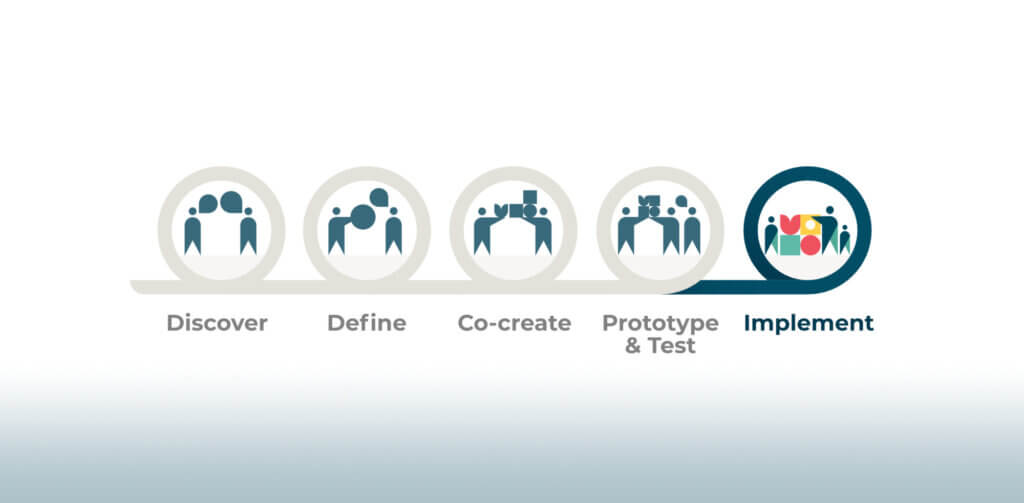
A Co-Design session to validate personas developed as part of our discovery process.
It should come as no surprise to anyone reading this that public sector challenges are incredibly complex. As I’ve mentioned previously, there is no one-size-fits-all method to designing public sector solutions — nor should there be. At CivicMakers, we believe there’s a better way.
While governments and nonprofits are increasingly digitizing and modernizing services, technology itself does not equate to solutions. Ultimately, the people whose day-to-day workflow will be directly impacted by technology have invaluable input for the design of programs and services to meet their needs.
CivicMakers has spent plenty of time thinking deeply about this, along with talking to our clients and partners about what they need to do their jobs more effectively. Our takeaway? Applying innovation processes to the public sector requires nuanced approaches that are highly dependent on context.
Hence…Public Impact Design, a methodology that blends three powerful, collaborative frameworks for creating change within systems, organizations, and individuals: human-centered design, systems thinking and reflective practice.
This carefully curated mix of approaches addresses some pitfalls of attempting to translate what’s worked in the private sector directly into the public sector. Our first training in the series will prepare public sector practitioners for co-designing service delivery directly with the communities they serve. This includes:
- strategies and tools for conducting effective user research
- frameworks to support continuous iteration
- methods for measuring success
- approaches that celebrate existing innovations already taking place
Components of Public Impact Design
Below are some brief definitions of the frameworks we’ll introducing and adapting through the training:
Human-Centered Design (HCD):
An approach to the design of programs, products, services and policies that involves human input throughout the entire process. HCD is characterized by collaborative problem-solving through multi-stakeholder engagement in a way that encourages creative experimentation.
Systems Thinking
A strategy for determining how a proposed program, product, service or initiative fits into larger environmental, political and social systems. Thinking about inter-related systems allows for an understanding of interdependence, which separates this approach greatly from innovation in the private sector. Systems thinking allows for practitioners to uncover leverage points that help drive systemic change, and prioritizes the collective intelligence of a group over the concept of individual “hero” innovators or executives.
Reflective Practice
A method of personal and professional learning and development through the assessment of our own thoughts and actions. Developing and honing the skill of reflective practice has practical applications for both home and work. It is an ancient practice that allows for individuals to thoughtfully and intentionally integrate self-reflection and critical evaluation into daily decision-making. The methodology allows us to use insights and learnings from the past to assess where we are now and envision how to move forward. When used in a group context, Reflective Practice can help transform ideation into meaningful and thoughtful action.



